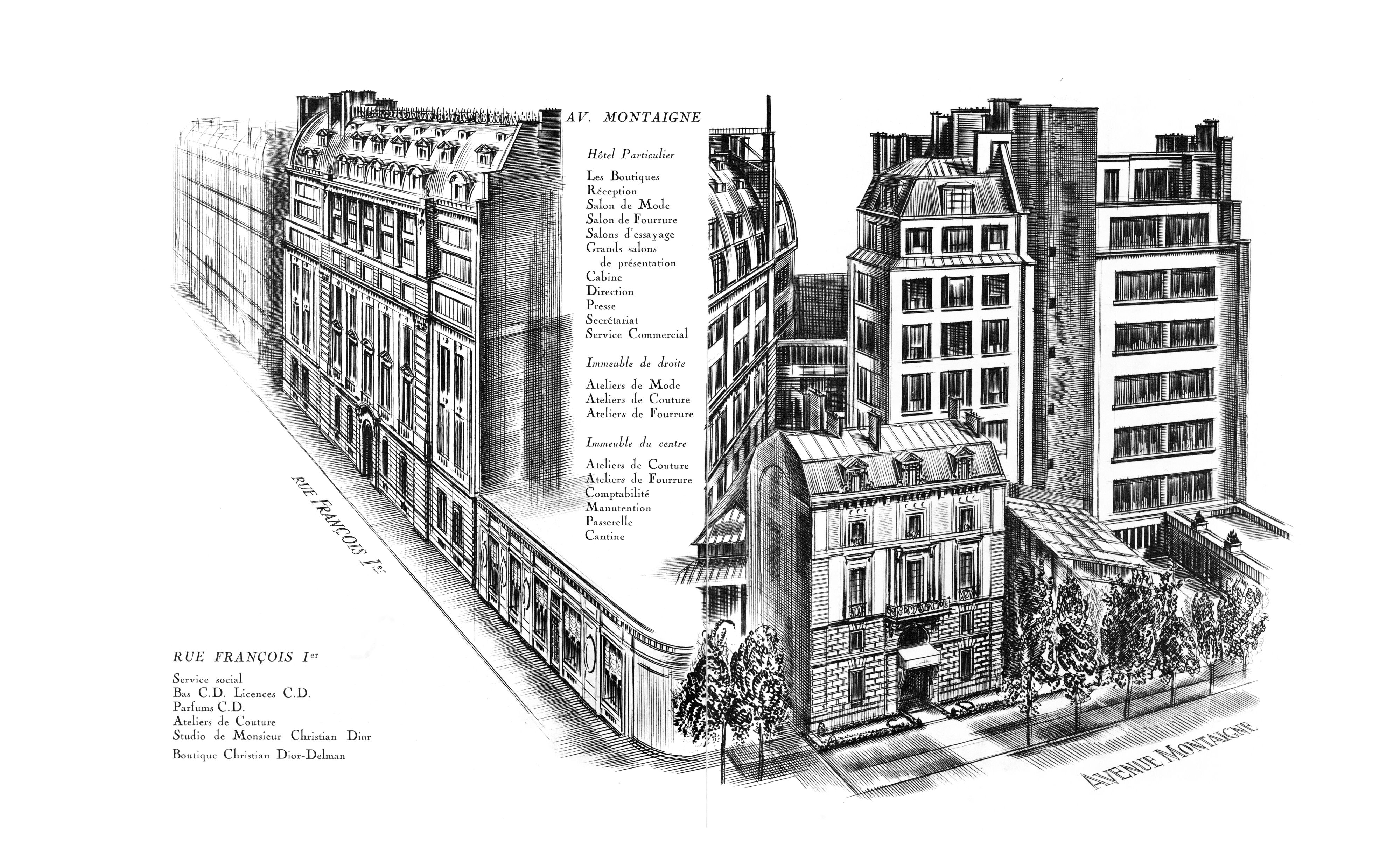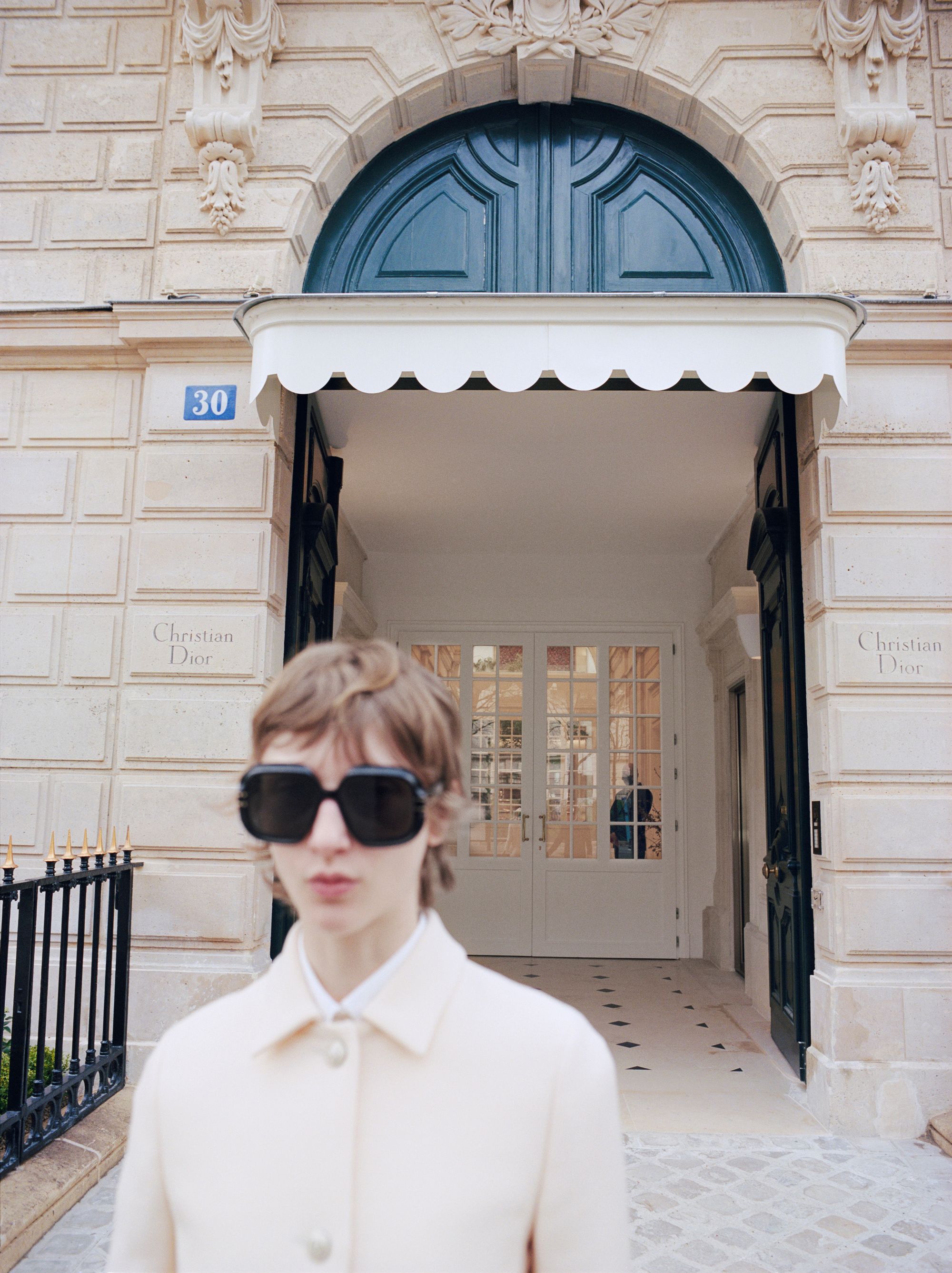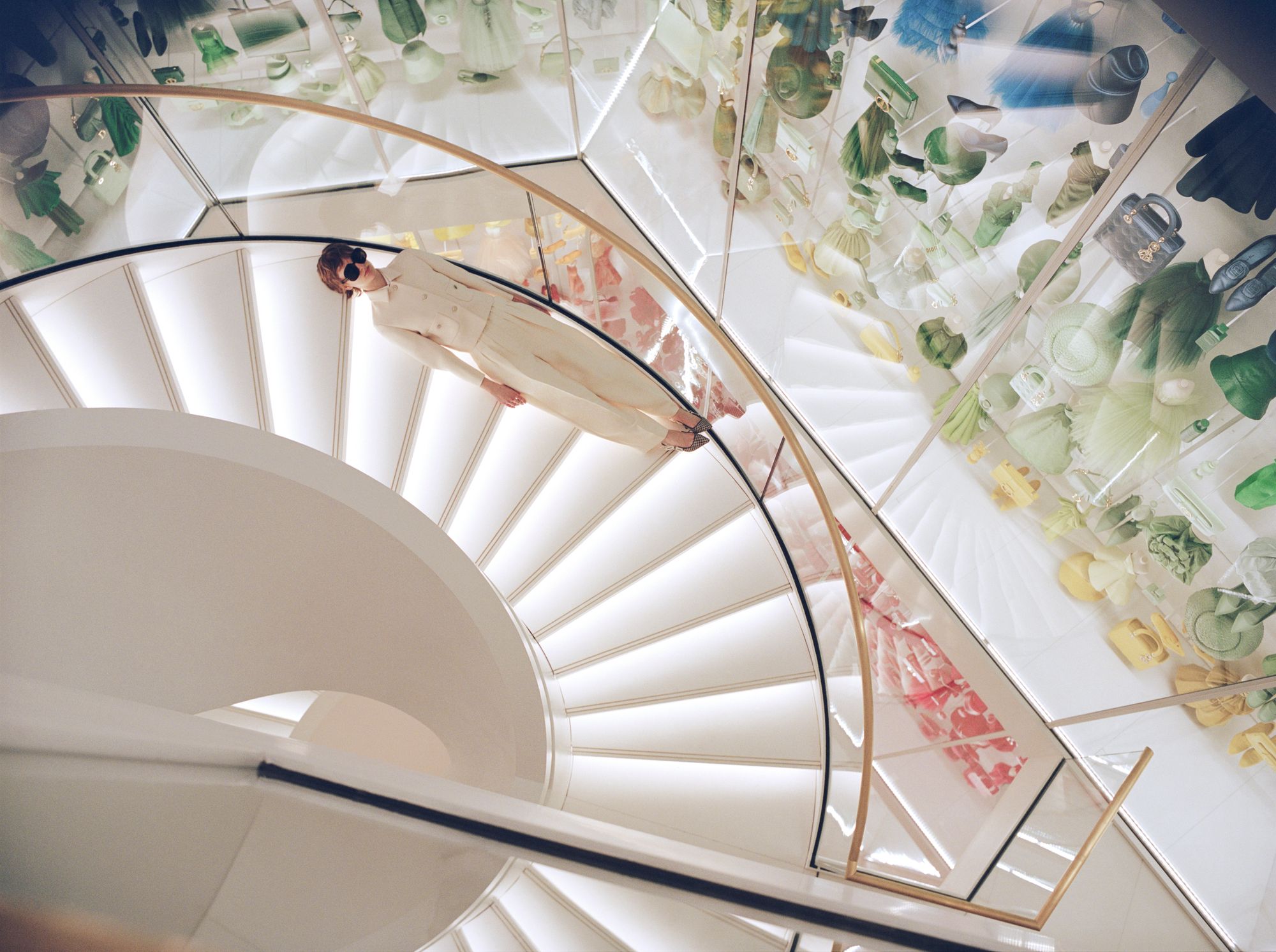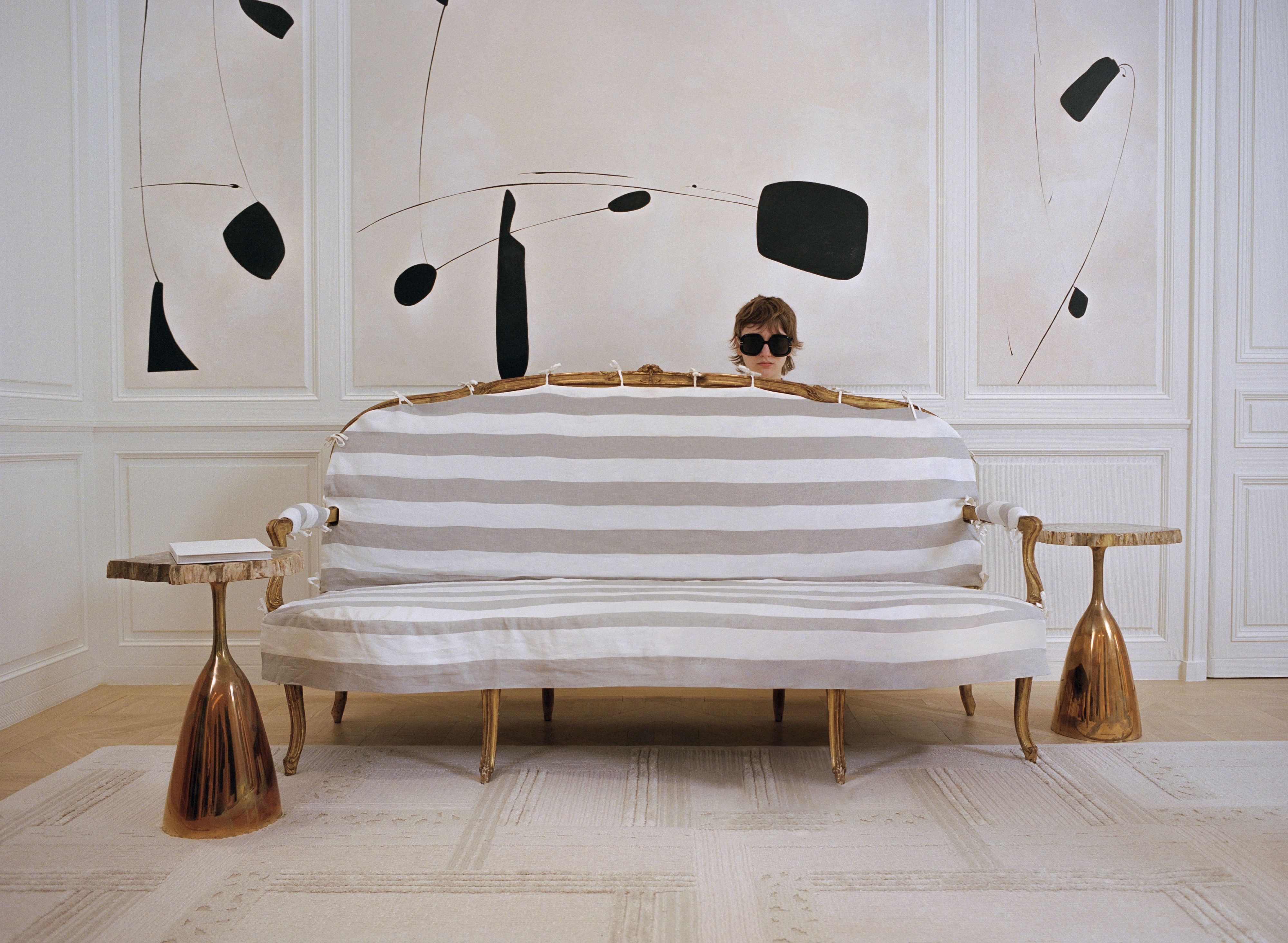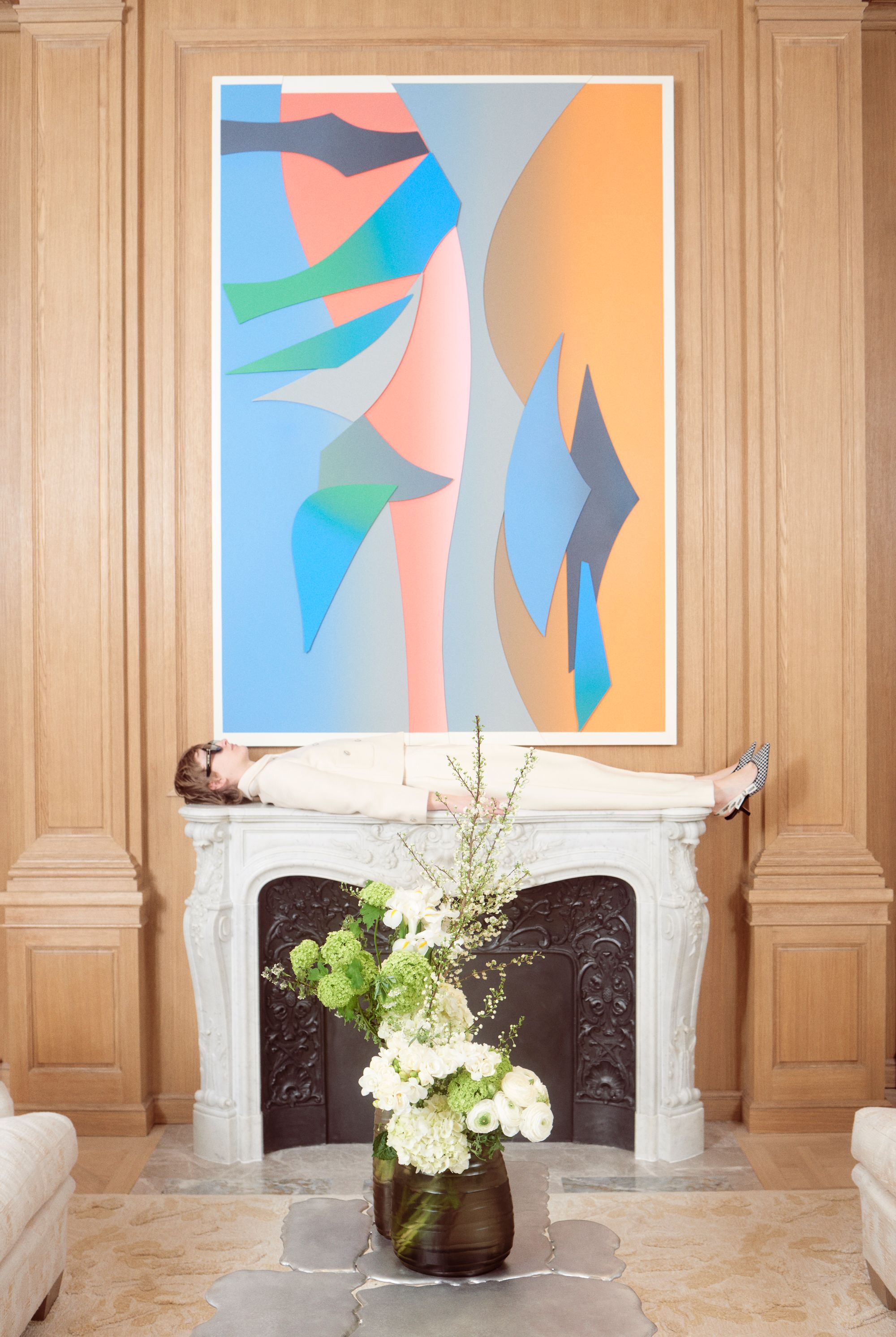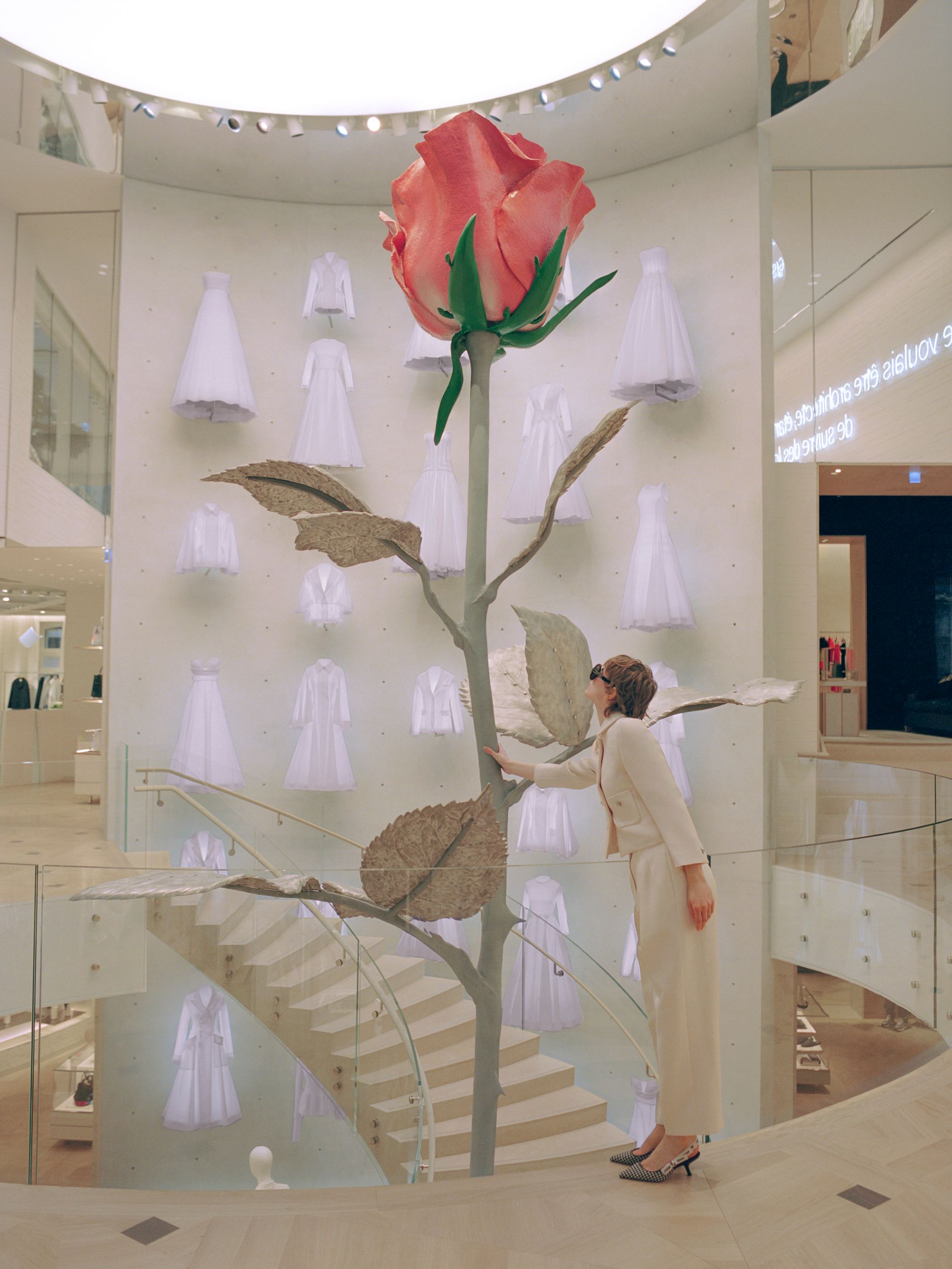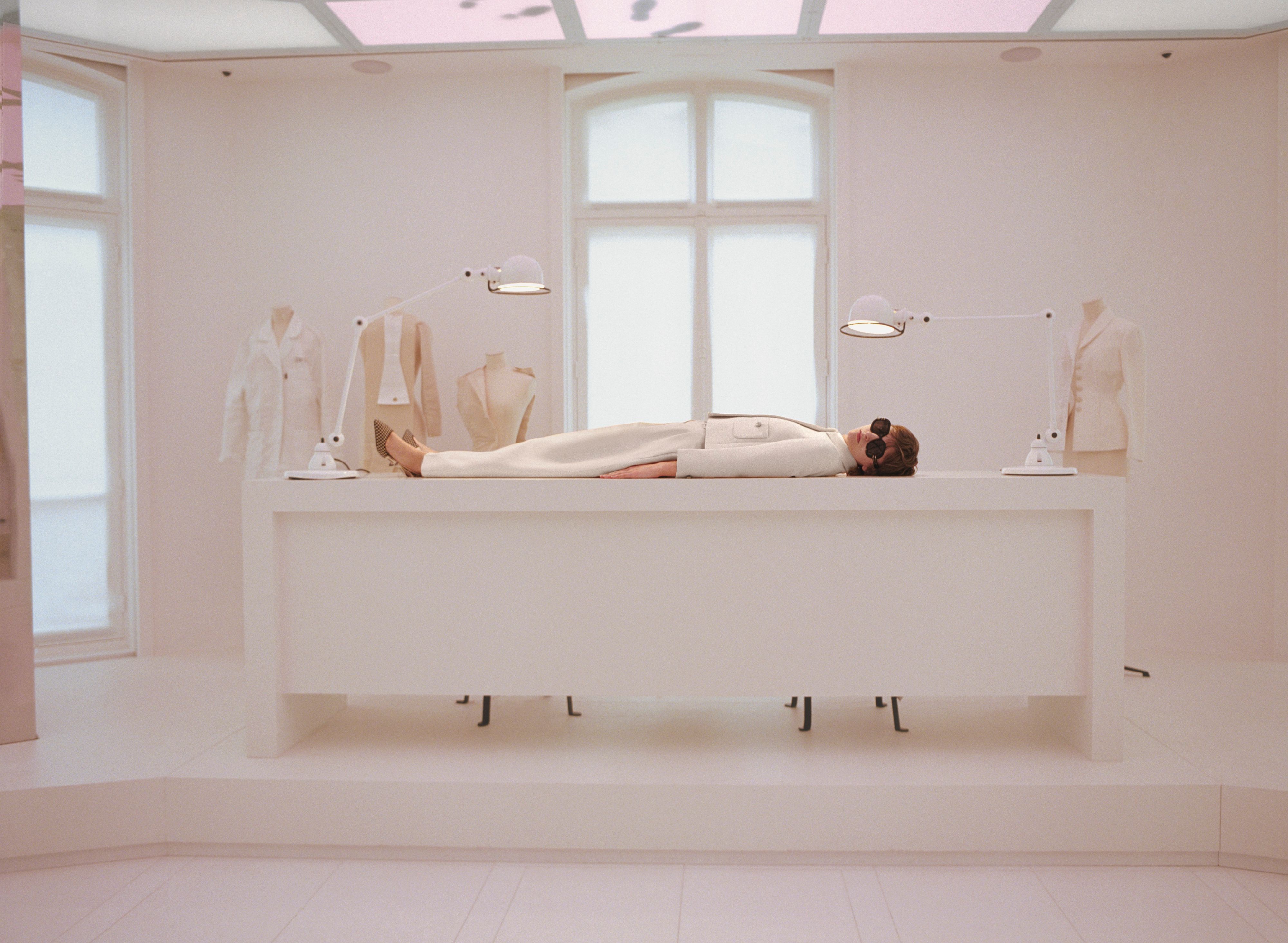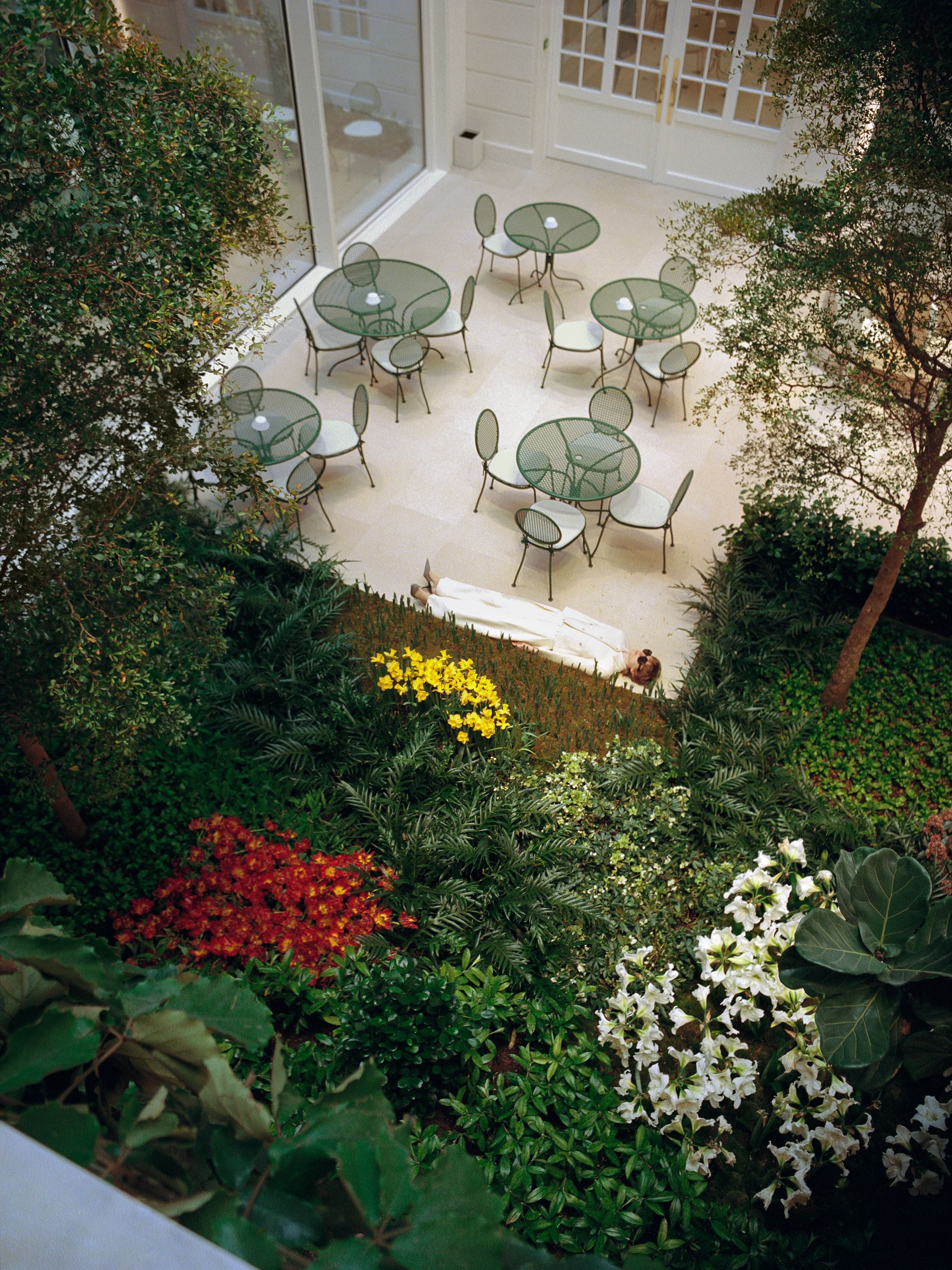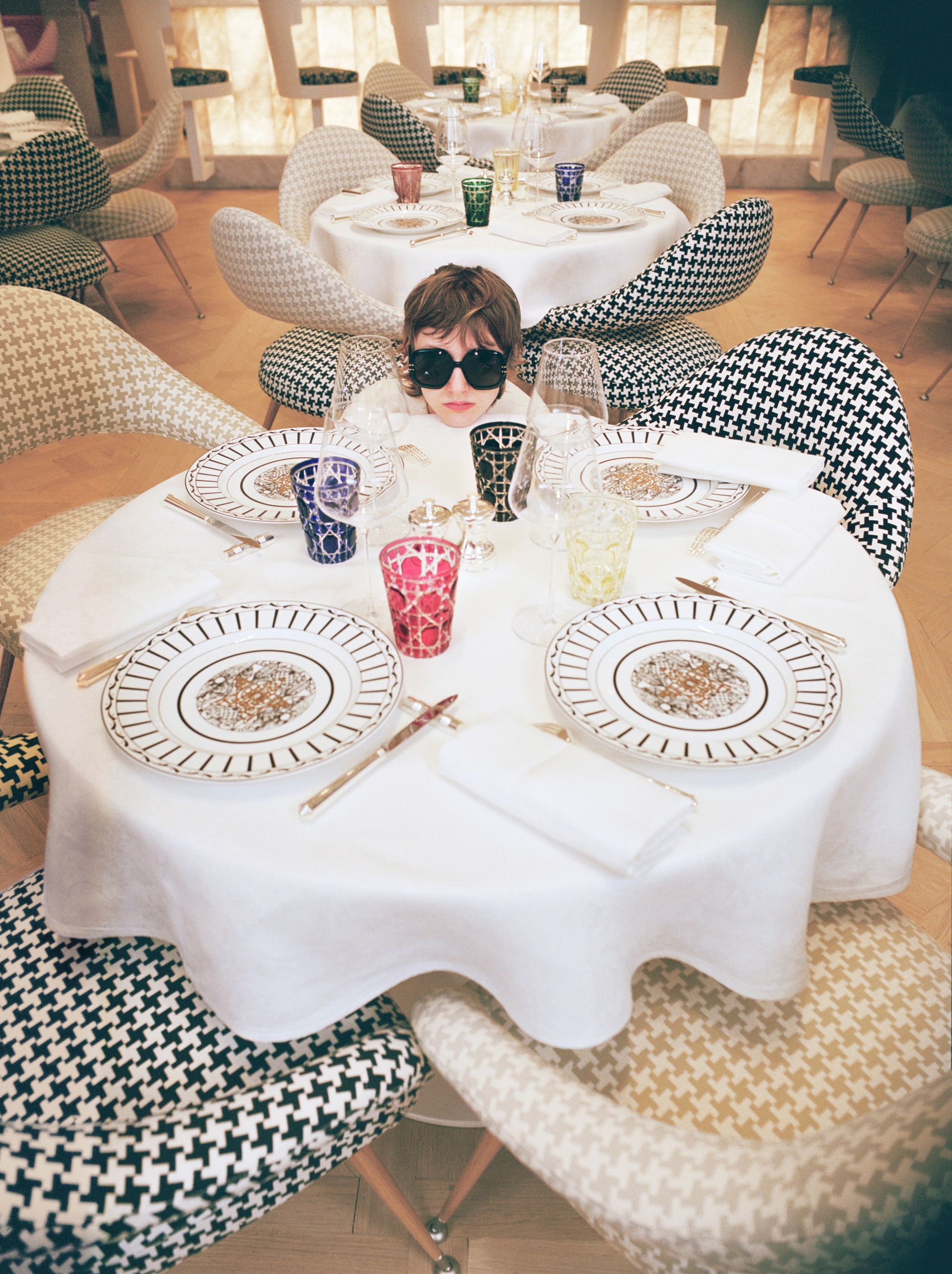
"I am determined to set myself up here and nowhere else!” is what Christian Dior is said to have exclaimed when first laying eyes upon the Hôtel de Millon d’Ailly de Verneuil (1865–68), the Parisian mansion that would later become the HQ for Dior. Anna is seen getting comfortable in the famous staircase, which during the early couture shows of the 1940s and 50s also served as seating for illustruous guests like Jean Cocteau or Marlene Dietrich.
